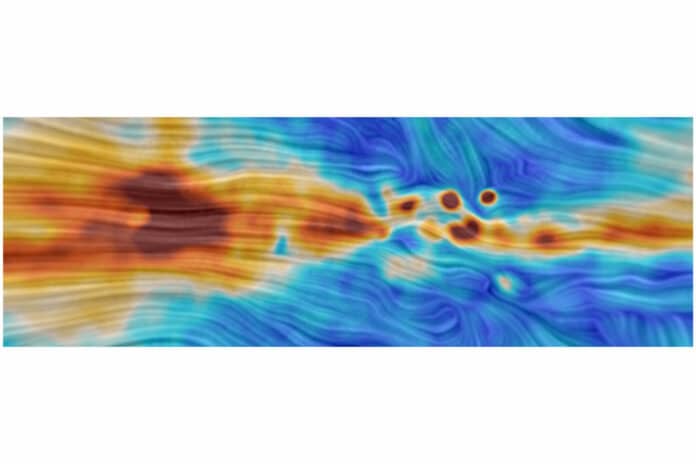Using telescopes that observe the sky in the microwave range, an international team of scientists has successfully mapped our Galaxy’s magnetic field, the Milky Way.
The scientists used the QUIJOTE (Q-U-I JOint TEnerife) Collaboration at the Teide Observatory in Tenerife in the Canary Islands. This consists of two 2.5 m diameter telescopes, which observe the sky in the microwave part of the electromagnetic spectrum.
This mapping initially started in 2012. Now, almost after a decade, scientists offered the most accurate description to date of the polarization of the emission of the Milky Way at microwave wavelengths.
The research adds to earlier space missions that looked at cosmic microwave background (CMB) radiation, the fossil radiation from the Big Bang that provided a thorough understanding of the Universe’s early history.
The QUIJOTE data have been beneficial in other circumstances in addition to mapping the Milky Way’s magnetic structure. The new data offer a novel method for researching anomalous microwave emission (AME), a category of emission that was initially identified 25 years ago. Extremely small dust particles in the interstellar medium, which are directed by the existence of the galactic magnetic field, are predicted to rotate and create AME.
The new findings helped the scientists understand the energetic processes that occurred near the Universe’s origin and provided information about the Milky Way’s magnetic field’s structure. The curtain of emission associated with our Galaxy must first be removed for scientists to measure signals from that period. The new maps provided by QUIJOTE do just that, allowing us better to understand these elusive signals from the wider Universe.
It also allowed studying a recently detected excess of microwave emission from the center of our Galaxy. It offers some evidence that this emission could be polarized by confirming its existence.
Last but not least, the new maps from QUIJOTE have allowed for the systematic study of over 700 sources of emission in radio and microwaves, both galactic and extragalactic in origin. This means that the data assists scientists in deciphering signals from outside our Galaxy, including cosmic microwave background radiation.
José Alberto Rubiño, a lead scientist of the QUIJOTE Collaboration, said, “These new maps give a detailed description in a new frequency range, from 10 to 40 GHz, complementing those from space missions such as Planck and WMAP. We have characterized the synchrotron emission from our Galaxy with unprecedented accuracy. This radiation is the result of the emission by charged particles moving at velocities close to that of light within the Galactic magnetic field. These maps, the result of almost 9,000 hours of observation, are a unique tool for studying magnetism in the Universe.”
Elena de la Hoz, a researcher at the Instituto de Física de Cantabria (IFCA), said, “One of the most interesting results we have found is that the polarized synchrotron emission from our Galaxy is much more variable than had been thought. The results we have obtained are a reference to help future experiments make reliable detections of the CMB signal.”
“Scientific evidence suggests that the Universe went through a phase of rapid expansion, called inflation, a fraction of a second after the Big Bang. If this is correct, we expect to find some observable consequences when we study the polarization of the cosmic microwave background. Measuring those expected features is difficult because they are small in amplitude and less bright than the polarized emission from our Galaxy. However, if we finally measure them, we will have indirect information about the physical conditions in the very early stages of our Universe, when the energy scales were much higher than those we can access or study from the ground. This has enormous implications for our understanding of fundamental physics.”
Federica Guidi, a researcher at the Institut d’Astrophysique de Paris (IAP, Francia), said, “The maps from QUIJOTE have also permitted the study of the microwave emission from the center of our Galaxy. Recently an excess of microwave emission has been detected from this region, whose origin is unknown but whose origin could be connected to the decay processes of dark matter particles. With QUIJOTE, we have confirmed the existence of this excess of radiation and have found some evidence that it could be polarized.”
Journal References:
- J A Rubiño-Martín, F Guidi, R T Génova-Santos, et al. QUIJOTE scientific results – IV. A northern sky survey in intensity and polarization at 10–20 GHz with the multifrequency instrument. Monthly Notices of the Royal Astronomical Society, Volume 519, Issue 3, March 2023, Pages 3383–3431, DOI: 10.1093/mnras/stac3439
- The microwave intensity and polarization spectra of the Galactic regions W49, W51, and IC443″, Tramonte et al., published in Monthly Notices of the Royal Astronomical Society. DOI: 10.1093/mnras/stac3657
- “The Haze as seen by QUIJOTE,” Guidi et al., published in Monthly Notices of the Royal Astronomical Society. DOI: 10.1093/mnras/stac3502
- “Galactic AME sources in the QUIJOTE-MFI North Hemisphere wide survey,” Poidevin et al., published in Monthly Notices of the Royal Astronomical Society. DOI: 10.1093/mnras/stac3468
- “Diffuse polarized foregrounds from component separation with QUIJOTE-MFI,” de la Hoz et al., published in Monthly Notices of the Royal Astronomical Society. DOI: DOI: 10.1093/mnras/stac3151
- “Radio sources in the QUIJOTE-MFI wide survey maps,” Herranz et al., published in Monthly Notices of the Royal Astronomical Society. DOI: 10.1093/mnras/stac3020
